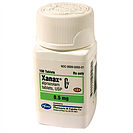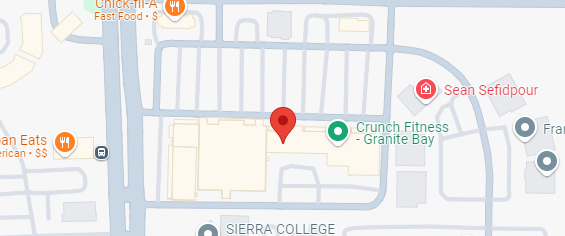 Dr. Isaac Marks and Dr. Richard Swinson led a study to determine the efficacy of the benzodiazepine class drug, alprazolam, marketed under the brand name, Xanax, by its developer, Upjohn. The Marks and Swinson study was published in the British Journal of Psychiatry in 1993. Previous studies had shown alprazolam to be no better than placebo, but there were limitations to those studies such as very high early placebo drop-out rates, they lacked follow-up with test subjects, and they did not compare alprazolam to exposure therapy. Dr. Marks and Dr. Swinson sought to avoid those short-comings in their study.
Dr. Isaac Marks and Dr. Richard Swinson led a study to determine the efficacy of the benzodiazepine class drug, alprazolam, marketed under the brand name, Xanax, by its developer, Upjohn. The Marks and Swinson study was published in the British Journal of Psychiatry in 1993. Previous studies had shown alprazolam to be no better than placebo, but there were limitations to those studies such as very high early placebo drop-out rates, they lacked follow-up with test subjects, and they did not compare alprazolam to exposure therapy. Dr. Marks and Dr. Swinson sought to avoid those short-comings in their study.
Upjohn marketed Xanax for the treatment of panic disorder, and they funded Marks and Swinson’s study hoping to show that Xanax works better than placebo. However, their study shows that Xanax actually hinders recovery from panic disorder in the long run, especially after discontinuation of the drug.
Marks says that panic disorder is really agoraphobia in most cases, but he said the pharmaceutical companies were looking for a new diagnostic label for which a drug could be marketed. Although Marks and Swinson published their study, Upjohn continued to market Xanax and minimized the implications of the study, namely that the drug utterly failed the treatment of the condition for which it was intended to treat.
The study had two separate pools of patients in two different locations (London and Toronto) and began with a total of 154 test subjects. Marks led the study for the groups in London, and Swinson led the study for the groups in Toronto. At each location, test subjects were broken into four groups: (1) a group that received alprazolam and relaxation therapy, (2) a group that received a placebo and relaxation therapy, (3) a group that received alprazolam and exposure therapy, and (4) a group that received a placebo and exposure therapy. Over 10 months (43 weeks) subjects had individual outpatient treatment from weeks 0 to 8, taper off medication completely from weeks 8 to 16, and then follow-up to week 43 without drug or psychological treatment. In the alprazolam groups, subjects began with 1 mg rising to a mean of 6 mg a day or more (up to 10 mg a day if needed to abolish panics).
| Weeks 0-8 | Weeks 8-16 | Weeks 16-43 |
| Treatment Phase | Taper Phase | Follow up Phase |
Four phobic targets were each rated 0-8 by both the test subjects and a third party assessor for avoidance and for fear. A 15 item phobia questionnaire was completed with each item rated for avoidance and fear. Five items concerned agoraphobia, blood injury, and social phobia. Overall phobia was also rated, and frequency of panics was counted. Mood, level of resultant disability caused by avoidance behavior, and overall improvement were all scored.
Results
The study started with 154 subjects, gradually lost subjects over the course of the study and ended with 76 subjects reporting at week 43. However, drop-outs were close in number in each group, and test subjects had similar symptom criteria from the outset of the study.
Patients taking alprazolam began to improve by week 2, but largely plateaued by week 4; there was no further improvement from weeks 6 to 8 and symptoms worsened thereafter. On spontaneous panics, groups receiving alprazolam became significantly worse than placebo cases. At week 23, ex-alprazolam patients were worse than ex-placebo cases on two phobia and three panic measures.
The group receiving alprazolam and exposure therapy was significantly better than the placebo and exposure therapy group on only 1 out of 34 comparisons up to week 8, and subsequently none. During weeks 8-23, compared to placebo patients, alprazolam patients lost some of their gains (whether with exposure or relaxation therapy), while the group receiving placebo and exposure therapy kept or slightly increased theirs.
After alprazolam withdrawal, the drug effect disappeared on every measure. In contrast, after exposure therapy ended, the exposure effect persisted on almost every measure except panic until the end of the trial, at week 43. Relapse is a problem whatever the time that alprazolam or any other benzodiazepine is stopped, according to the study. The researchers state that the high dose alprazolam effect might continue as long as the drug is given, but, they note, such treatment seems redundant (presumably alluding to the point that given the efficacy of exposure therapy, a benzodiazepine is not necessary for proper treatment).
Compared with exposure without the drug, combined alprazolam with exposure therapy did not produce significant gains during treatment, and indeed, after withdrawal of the drug, the group that received alprazolam regressed.
The study does not implicate the physiological consequences of benzodiazepine withdrawal for the rebound anxiety and panic experienced after the drug groups were tapered off the drug. However, the researchers note that the gains made during high dose alprazolam treatment may have been lost subsequent to discontinuance of the drug may have to do with the learning impairment effect caused by benzodiazepines and barbiturates.
Studies have shown that while animals are taking tranquilizers, their ability to retain what they have learned is less than what they retain in a drug-free state. Higher dose anxiolytics can interfere with GABA stimulated mechanisms as well as others involved in memory. The researchers cite another study which showed patients who attributed improvement to medication at week 8 of benzodiazepine treatment had more fear and avoidance of phobic situations and relapsed more subsequently. Apparently, individual’s beliefs of how well benzodiazepines are helping them is often misleading.
This study is bolstered by the fact that it is longitudinal meaning that data is gathered from the same subjects repeatedly over a period of time. This study design provides a much better picture of what is going on. Additionally, outcomes were similar in the London and Toronto groups of test subjects strengthening the results.
Dr. Marks said that the folks at Upjohn were “not happy at all about our study.” Yet, they were not deterred in their endeavor to market and sell the drug on a mass scale. Today, all benzodiazepines are generic drugs and drug companies do not take aggressive measures to market them. However, when those drugs were name brand, the pharmaceutical companies went to great lengths to ensure the financial success of these drugs. In the case of Xanax (alprazolam), the drug maker was completely unmoved by a study they funded that showed their drug worsens the condition for which it is prescribed, especially if the patient discontinues its use.
Sourse: Benzoinfo.com








